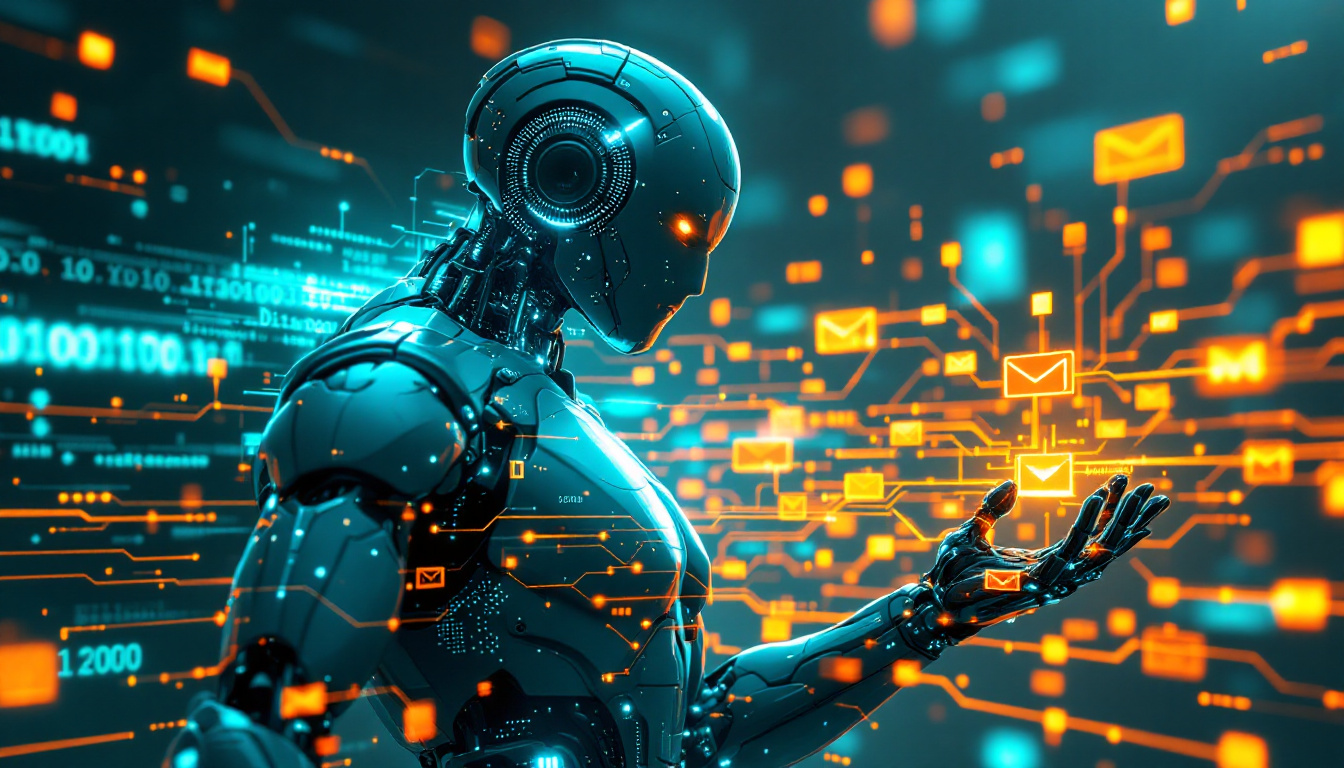
Threat Actors Weaponizing Generative AI: The Evolving Cybersecurity Battle
AI-Powered Threats: How Cybercriminals Are Weaponizing GenAI – The Rise of Machine-Generated Mayhem
Threat Actors Weaponizing Generative AI: The Evolving Cybersecurity Battle
A disturbing trend has emerged as we move through 2025: sophisticated threat actors are increasingly leveraging generative artificial intelligence (GenAI) to enhance their attack capabilities. This technological shift represents a significant escalation in the cybersecurity arms race, with malicious actors using AI to develop more convincing social engineering attacks, generate sophisticated malware, and automate complex attack chains.
 Understanding the Threat
Understanding the Threat
Threat actors are employing GenAI in several key ways that pose unique challenges to cybersecurity defenses. These AI-driven trends include voice phishing (vishing) attacks where threat actors leverage AI-generated voices that sound shockingly realistic, even adopting local accents and dialects to deceive victims. Rather than using GenAI to create entirely new attack vectors, cybercriminals are primarily using these tools to scale and enhance existing threats.
The fundamental nature of these threats isn’t new – AI is not creating new threats but is scaling and strengthening existing known threats at unprecedented speed and volume. According to recent intelligence, threat actors ranging from nation-state groups to ransomware gangs are using GenAI to:
- Create highly convincing phishing emails that are increasingly difficult to distinguish from legitimate communications
- Generate malware variants that can evade detection by traditional security tools
- Develop deepfakes for both audio and video to support social engineering attempts
- Automate reconnaissance and target profiling
- Analyze defensive systems to identify potential vulnerabilities
 Severity of the Issue
Severity of the Issue
The incorporation of GenAI into cybercriminal operations represents a high-severity threat for several reasons. Malicious actors are leveraging AI to craft malware that adapts, evades, and evolves, posing an unprecedented challenge to cybersecurity defenses. This adaptive nature makes such threats increasingly difficult to detect and defend against, as they continuously modify their tactics and strategies.
Security experts at the inaugural HumanX conference warned that “adversaries have the tools for these attacks already at their disposal and can flip the switch at any point,” suggesting that we’re on the precipice of seeing fully autonomous malware attacks. Some experts predict we’re less than two years away from witnessing agentic malware being deployed in nation-state cyber warfare.
The most concerning aspect is how GenAI reduces the skill barrier for launching sophisticated attacks. Attackers who previously lacked technical expertise can now leverage AI tools to generate convincing social engineering content, develop malware, and orchestrate complex attack sequences.
 Exploitation Methods
Exploitation Methods
Threat actors typically exploit GenAI capabilities through several methods:
- Social Engineering Enhancement: Sophisticated ransomware groups are shifting toward lower-volume, high-impact campaigns in 2025, focusing on individual companies and stealing vast amounts of data. GenAI makes these targeted attacks more convincing by generating personalized content that appears legitimate.
- Malware Evolution: AI-powered malware exhibits adaptive evasion capabilities, altering its behavior dynamically to bypass existing cybersecurity measures and learning from encounters with defense systems. This makes traditional signature-based detection increasingly ineffective.
- Automated Attack Chains: By 2025, malicious use of multimodal AI will be used to craft an entire attack chain. As multi-modal AI systems gain the ability to integrate text, images, voice, and sophisticated coding, they streamline and automate the entire pipeline of a cyberattack. This includes everything from target profiling to malware deployment and data exfiltration.
- Productivity Amplification: Rather than enabling disruptive change, generative AI allows threat actors to move faster and at higher volume. For skilled actors, generative AI tools provide a helpful framework, similar to the use of Metasploit or Cobalt Strike in cyber threat activity.
 Who’s Behind These Attacks?
Who’s Behind These Attacks?
A wide range of threat actors are incorporating GenAI into their operations:
- Advanced Persistent Threat (APT) Groups: Nation-state backed hackers from multiple countries are experimenting with GenAI tools. Google analyzed Gemini activity associated with known APT actors and identified APT groups from more than 20 countries that used Gemini, with the highest volume of usage coming from Iran and China.
- Ransomware Gangs: RansomHub is currently one of the most prevalent ransomware groups, responsible for 17% of published attacks according to recent data. This Ransomware-as-a-Service (RaaS) operation emerged as a rebranded version of the previously known Knight ransomware. These groups are incorporating GenAI to make their operations more efficient and harder to detect.
- Information Operations Actors: Information Operations (IO) actors use Gemini primarily for content generation, including developing personas and messaging, and translation and localization, with Iranian IO actors accounting for three-quarters of all use by IO actors.
 Who Is at Risk?
Who Is at Risk?
While all organizations face some level of risk from GenAI-powered attacks, certain sectors are particularly targeted:
Manufacturing, healthcare, education, and energy remain primary targets for ransomware, with no slowdown in attacks expected in 2025. Critical infrastructure and susceptibility to operational disruptions make these sectors particularly attractive to cybercriminals.
Organizations with valuable intellectual property, financial data, or personal information face heightened risk, as do those with public-facing services that can be targeted through convincing social engineering. Government institutions also remain high-priority targets for nation-state actors exploring GenAI capabilities.
Small and medium-sized businesses face particular challenges as they often lack the sophisticated security resources needed to detect and respond to these evolving threats.
 Remediation Strategies
Remediation Strategies
To protect against GenAI-powered attacks, organizations should implement a multi-layered defense strategy:
- Implement AI-Enhanced Security Tools: Fight AI with AI by deploying security solutions that use machine learning to detect anomalies and potential threats. These tools can identify the subtle patterns that may indicate an AI-generated attack.
- Strengthen Authentication: DMARC provides additional layers of protection by enabling domain owners to receive reports on email delivery and take necessary actions to strengthen email security, thereby acting as a shield against generative AI cybersecurity risks. Implement multi-factor authentication across all systems and applications.
- Regular Security Training: Educate employees about the latest social engineering tactics, including AI-generated content. Teach them to be skeptical of unexpected requests, even when they appear to come from trusted sources.
- Robust Patch Management: Keep all systems and applications updated with the latest security patches to minimize vulnerability exploitation.
- Network Segmentation: Limit the potential damage from a breach by segmenting networks and implementing zero-trust architecture principles.
- Regular Security Assessments: Conduct frequent penetration testing and security assessments to identify and address vulnerabilities before they can be exploited.
 How CinchOps Can Help
How CinchOps Can Help
At CinchOps, we’ve developed comprehensive defense strategies specifically designed to counter the rising threat of GenAI-powered attacks. Our team of cybersecurity experts stays at the forefront of emerging threats, continuously updating our protection mechanisms to address the latest attack techniques.
Our services include:
- Advanced threat detection systems that use AI to identify potential GenAI-generated attacks
- Regular security assessments to identify and address vulnerabilities
- Employee education programs focused on recognizing sophisticated social engineering attempts
- 24/7 monitoring and rapid response capabilities to minimize damage from successful attacks
- Implementation of zero-trust architecture to reduce attack surface
- Custom security solutions tailored to your organization’s specific needs and risk profile
Don’t wait until your organization becomes a victim of these increasingly sophisticated attacks. Contact CinchOps today to ensure your defenses are prepared for the next generation of cyber threats.
By partnering with CinchOps, you gain access to over three decades of IT security experience, providing the expertise needed to protect your valuable digital assets in this new era of AI-powered cyber threats. Our team understands the unique challenges facing small and medium-sized businesses, and we deliver enterprise-grade security solutions that fit your budget and operational requirements.
Contact us today to schedule a security assessment and take the first step toward strengthening your defenses against emerging GenAI threats.
 Discover More
Discover More 
Discover more about our enterprise-grade and business protecting cybersecurity services: CinchOps Cybersecurity
Discover related topics: Darcula Adds GenAI to Phishing Toolkit: A New Era of Accessible Cybercrime
For Additional Information on this topic: Threat Groups Aren’t Developing New Attack Vectors with GenAI
![]()
FREE CYBERSECURITY ASSESSMENT



